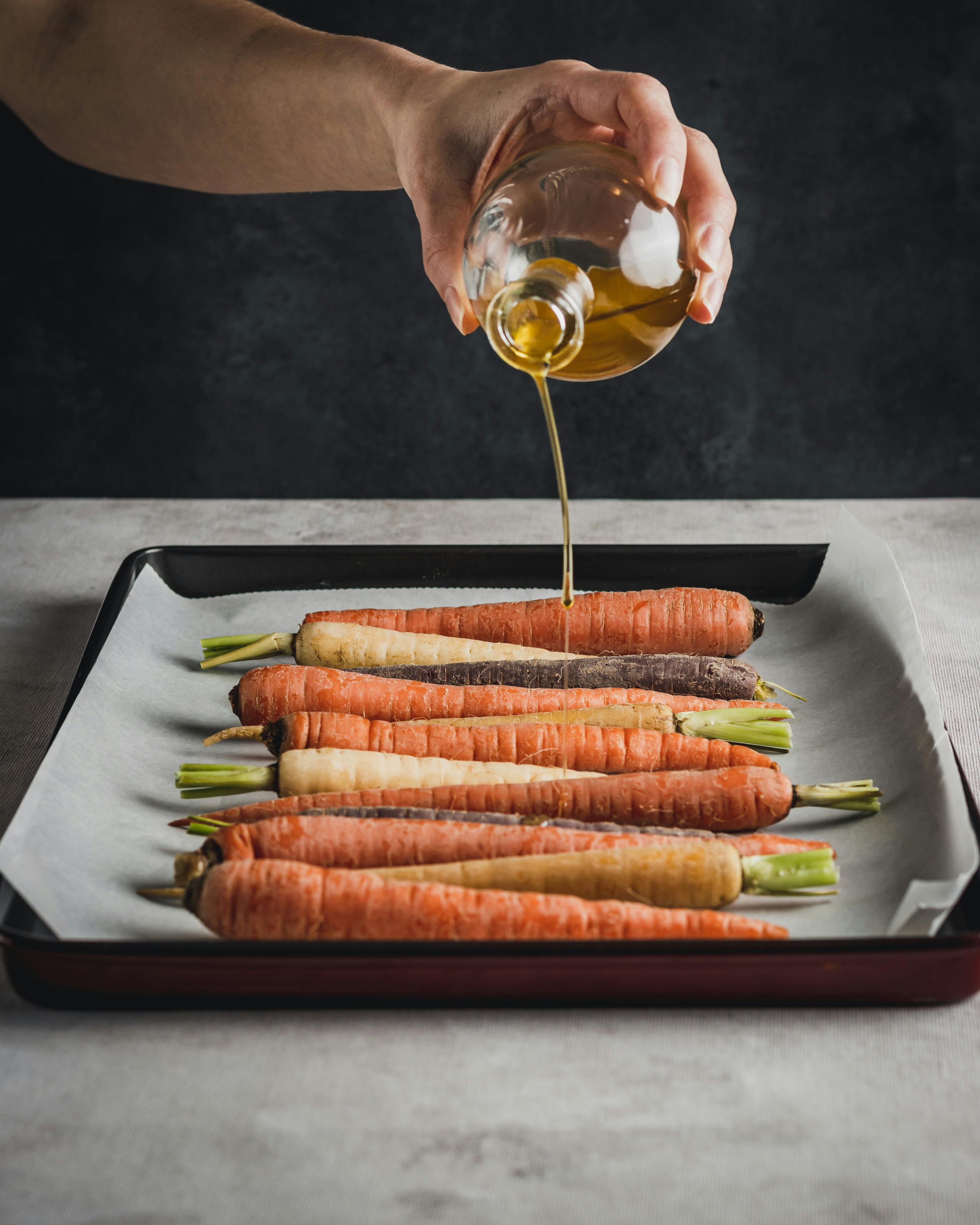Are Seed Oils Bad? The Truth Behind Vegetable Oil—and What to Use Instead
You’re standing in your kitchen, flipping over a bottle of vegetable oil, wondering—is this stuff really that bad? Maybe you’ve started paying closer attention to ingredients. You’re label-reading at the grocery store, thinking about what’s actually in the food you’re feeding your family.
And then you keep seeing the same phrase everywhere: “Avoid seed oils.”
Let’s break it all down—what seed oils are, how they’re made, why they’re not doing your health any favors, and the easy swaps that’ll make your kitchen feel a whole lot cleaner (without turning your life upside down).
What Are Seed Oils, Really?
Seed oils (also called vegetable oils or industrial seed oils) are oils extracted from seeds like:
Canola (rapeseed)
Soybeans
Corn
Sunflower
Safflower
Cottonseed
Grapeseed
They’re cheap to produce and are everywhere—in salad dressings, baked goods, granola bars, sauces, frozen meals, and almost anything you grab from a drive-thru. Even many “natural” or “heart-healthy” products are loaded with them.
Why Should You Care? The Process Is the Problem
Let’s walk through how seed oils are made—because once you know, you can’t un-know.
1. Grown in Bulk (Usually GMO)
Most seed oils come from heavily sprayed, genetically modified crops, which are often loaded with pesticides like glyphosate.
2. Crushed Under High Heat
The seeds are mechanically pressed using high heat, which damages the natural fats and creates oxidative stress before it even gets to your skillet.
3. Washed with Petroleum-Based Solvents
To squeeze out every last drop, manufacturers use hexane, a chemical solvent derived from crude oil. (Yup. Gasoline’s cousin.)
4. Refined, Bleached, and Deodorized
Next, the oil is:
Degummed (using acid and water)
Neutralized with lye
Bleached with clay to remove color
Deodorized with steam to remove the rancid smell
By the end? You’re left with a highly unstable oil that looks clean but has been stripped of nutrients and loaded with damaged, inflammatory fats.
Why Seed Oils Can Be Harmful to Your Body
You’ve probably heard that seed oils are high in omega-6 fatty acids—and that’s true. But the real issue? Balance and quality.
Most women today are eating way too many omega-6s (thanks to seed oils in everything), and not enough omega-3s (from things like fish, flax, or chia). That imbalance leads to:
Chronic inflammation
Hormonal disruption
Gut irritation
Fatigue, brain fog, and skin issues
And even increased risk for heart disease and cancer
Plus, when seed oils are heated (either during processing or cooking), they oxidize—creating harmful free radicals that can damage your cells.
The stats from this Pubmed article: The importance of the ratio of omega-6/omega-3 essential fatty acids are actually mind blowing.
A Closer Look at the Oils You See Most Often
Canola Oil
Made from genetically modified rapeseeds
Chemically deodorized (because it smells awful naturally)
Often used in “health” foods due to its mild flavor—but it’s anything but healthy
Vegetable Oil
A catch-all blend (usually corn, soybean, and canola)
Inexpensive and found in everything from boxed cake mix to store-bought fried chicken
Sunflower & Safflower Oils
Very high in linoleic acid (omega-6)
Unless labeled “high-oleic” (a better form), these break down easily in heat and light
Soybean & Corn Oil
Common in packaged snacks, restaurant food, and margarine
Linked to inflammation, insulin resistance, and poor metabolic health
What You Can Use Instead: Safe, Healthy Oil Swaps
Now for the fun part—what to use instead that’s not just safer, but actually nourishing. These options are clean, stable at high heat, and full of nutrients your body and brain love.
1. Avocado Oil
Neutral taste and a super high smoke point
Great for roasting, sautéing, or homemade mayo
Rich in monounsaturated fats and vitamin E
2. Extra Virgin Olive Oil
Best for low-heat cooking or dressings
Full of polyphenols, antioxidants, and anti-inflammatory benefits
Look for dark bottles to protect quality
3. Beef Tallow
Old-school cooking fat that’s made a huge comeback
Rich in fat-soluble vitamins (A, D, E, K2)
Incredible for high-heat searing and roasting
4. Ghee (Clarified Butter)
Butter with the milk solids removed (so it’s lactose-free)
Contains butyrate, which supports gut and brain health
Has a long shelf life and won’t burn like butter
5. Grass-Fed Butter
A source of conjugated linoleic acid (CLA) and omega-3s
Delicious on veggies, toast, or added to sautéed meals for flavor and satiety
6. Coconut Oil
Stable at medium heat and great for baking or sautéing
Rich in medium-chain triglycerides (MCTs), which are easily used for energy
Naturally antimicrobial and supports gut health
Look for unrefined, virgin coconut oil for the most benefits (refined has less coconut flavor but is still a good option for cooking)
Let’s Keep It Real
If your pantry still has vegetable oil in it—don’t panic. This isn’t about perfection—it’s about making one smart swap at a time. Maybe today it’s your cooking oil. Next week, it’s your salad dressing.
I started this journey when my husband was diagnosed with cancer—and let me tell you, nothing makes you reevaluate what’s in your kitchen faster than a health scare. I wanted to do better. I wanted to feed my family with more intention. And you can, too.
Final Thoughts: Say Goodbye to Seed Oils (And Hello to Healthier Cooking)
By ditching seed oils, you’re saying yes to:
Less inflammation
More energy and clarity
A cleaner kitchen and healthier family
You don’t need to overhaul your entire life—just start with that bottle next to the stove. And remember: you deserve to know what’s in your food—and feel good about what you’re serving your family.
Want to learn more? This is a great conversation on seed oils between Gary Brecka and Dr. Paul Saladino.
Want More Toxin-Free Swaps and Real-Life Wellness Tips?
Subscribe to my weekly newsletter, Wake Up Well with Lex, and get easy, uplifting tips to help you live cleaner, feel better, and simplify wellness—one swap at a time.

